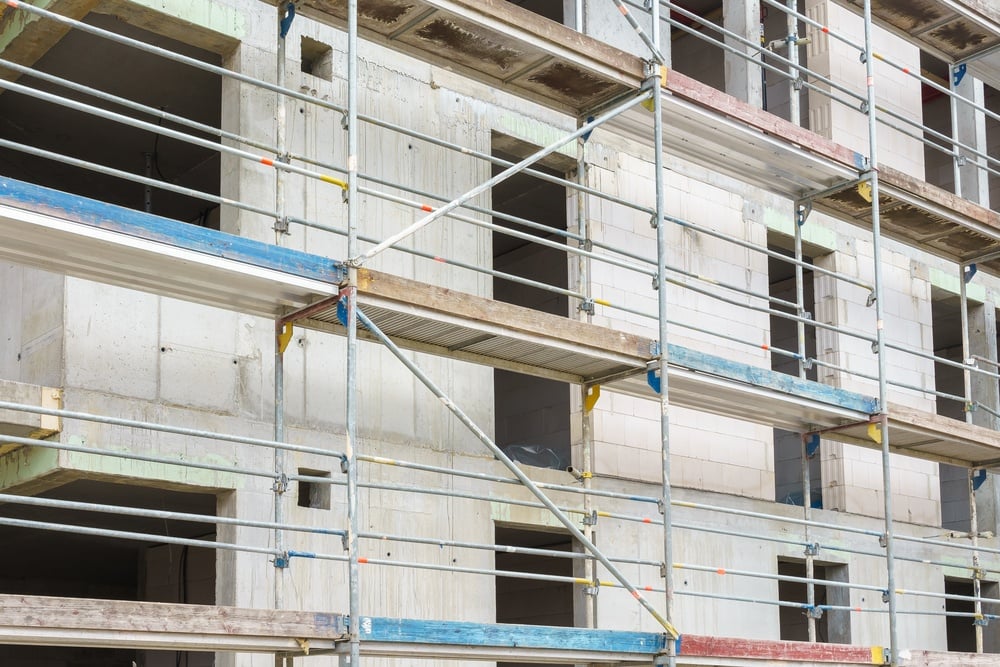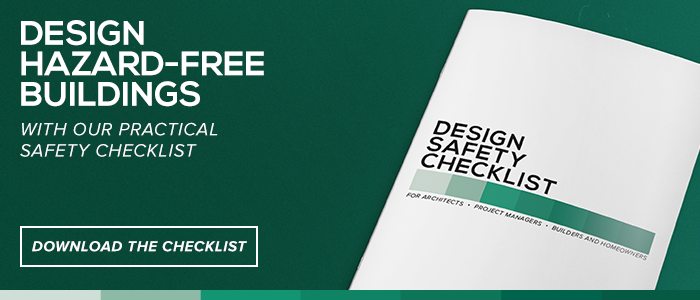During the planning, design, and construction phase of any project, safeguarding the property from potential risks is critical to the project’s success.
To ensure the safety of the property and its users — without compromising on the aesthetics of your design, timeframes or budget — you need to be a forward thinker. Incorporating safe design principles from the initial phases of the project guarantees the best possible safety measures, processes, and materials from the beginning.
Based on Safe Work Australia’s Guidance on the Principles of Safe Design for Work, here are six essential considerations and project control measures for safe project design.
1. A collaborative approach
From architects to tradies, everyone involved in a project must ensure it meets all safety standards. In addition to the architects and engineers who create the design, any decision-makers who influence the final outcome (including project managers, OHS professionals, and more) has a responsibility to ensure project safety.
Adopting a collaborative approach amongst stakeholders makes for a smoother, and more fail-safe process. Measures to incorporate safe design principles during the early phases include:
- conducting workshops with clients and project managers during the conceptual design stage to ensure potential issues are identified early;
- involving specialists such as engineers or building service designers during the initial risk assessment process, particularly for unusually complex designs;
- documenting any issues identified during the research, consultation and user input phases to inform subsequent risk assessment.
2. Consider the entire building lifecycle
Safe design applies to every phase of the building lifecycle, from the initial conception through to a building’s maintenance, development and even demolition. Even amidst the deadlines of construction, project managers shouldn’t neglect the post-occupancy phase of the building.
Safety measures to incorporate during the construction phase of the project include:
- preparing a safe work method statement and an on-site emergency plan factoring in environmental and spatial conditions;
- site-specific safety training and inductions;
- providing PPE for all workers;
- conducting regular safety audits during construction;
- maximising the use of components with off-site or on the ground prefabrication to prevent falls from a height;
- scheduling the construction of permanent stairways at the beginning of construction to minimise the hazards of temporary stairs and scaffolding.
After construction has concluded, you must ensure the site is safe for public use by:
- researching and designing for the likely workflows of the building’s intended function, including site-specific hazards;
- using slip-resistant materials, tread and nosings on floor surfaces to ensure pedestrian safety, while still looking aesthetically pleasing;
- separating vehicles and pedestrians in the design of any traffic areas, and designing for forward-only vehicle movements;
- incorporating space and floor loadings with capacity for any heavy machinery that may be used in the building.
You must also design for safe maintenance and alteration:
- ensure building safety assessments are regularly performed to remain compliant with changing regulations over time;
- design safe access and ample space so that maintenance can be performed safely, ideally at ground level or using building maintenance units;
- reduce the need for cleaning and maintenance by avoiding dirt traps through features such as entry mats and frames.
3. Systematic risk management
Safe design requires you to identify and control potential hazards arising during the course of the project.
By adopting a risk-based approach early on in the design process, hazards can be mitigated well in advance, lessening the potential costs and time delays of surprises, accidents or mishaps during construction.
A risk-based approach entails:
- project managers collating and reviewing a list of potential risks based on past projects at the project outset;
- identifying causes, triggers and responses for each risk;
- using the Construction Hazard Assessment Implication Review (CHAIR) tool to ensure collaborative risk management by key stakeholders throughout the project;
- utilising a hierarchy of control based approach to risk assessment so that any hazards that can’t be eliminated are minimised wherever possible;
- incident mitigation — consider how to mitigate any possible emergency or natural disaster occurring through factors such as egress and siting;
- developing stringent control systems in case something does go wrong;
- ensuring all site works effectively implement the risk and safety plan.
4. Safe design knowledge
As one of the most highly-regulated industries in Australia, in construction, knowledge and capability of safe design is extremely important. Put simply, anyone involved in or influencing the project design should have a comprehensive and up-to-date understanding of the vast array of relevant codes of practice and legislation — from the Building Code of Australia (BCA) to state planning principles, regulations, ministerial specifications, local environmental plans and more — or seek expert advice to address any knowledge gaps and ensure compliance.
5. Information transfer
To ensure that safety standards are adhered to even after the building construction is complete, there needs to be an effective flow of information between everyone involved in the process. Rigorous documentation and open communication is key to ensure the right information is shared with the right people.'
6. Long-term thinking
Amidst an industry-wide shift towards poor quality and imported building materials to cut back on costs, here at Latham Australia, we believe another crucial safe design principle is to prioritise long-term objectives of safety and wellbeing rather than the minimal short-term payoff of cutting corners on subpar products.
Cost-cutting measures can backfire, with tragic consequences in the form of illness, accidents, structural failure, legal action and even death. For instance, some imported products have been found to contain asbestos, while the use of unsafe, non-conforming products (NCPs) has previously caused fatal fires on construction sites. This sometimes occurs due to a failure to understand different countries’ regulatory requirements; products deemed safe overseas may not be compliant with Australian law.
Using premium quality, Australian-made building supplies with a long lifespan can help eliminate safety risks in your project and ensure legal compliance. You’ll want to utilise independently fire-tested materials that meet Australia’s rigorous fire safety standards, such as Latham’s range of safety flooring systems. Independent safety testing for luminance contrast and slip resistance is well worth examining — proper accreditations are the only way to ensure a product’s claims are trustworthy.
Getting things right early on in the design phase makes the project more time and cost-effective. For more information on incorporating safe design principles into your projects, download our free Design Safety Checklist. Click on the image below to get started.
To find out more about Latham products, please visit www.latham-australia.com. To talk to a Latham product expert, call 1300 LATHAM (528 426) or email sales@latham-australia.com.



